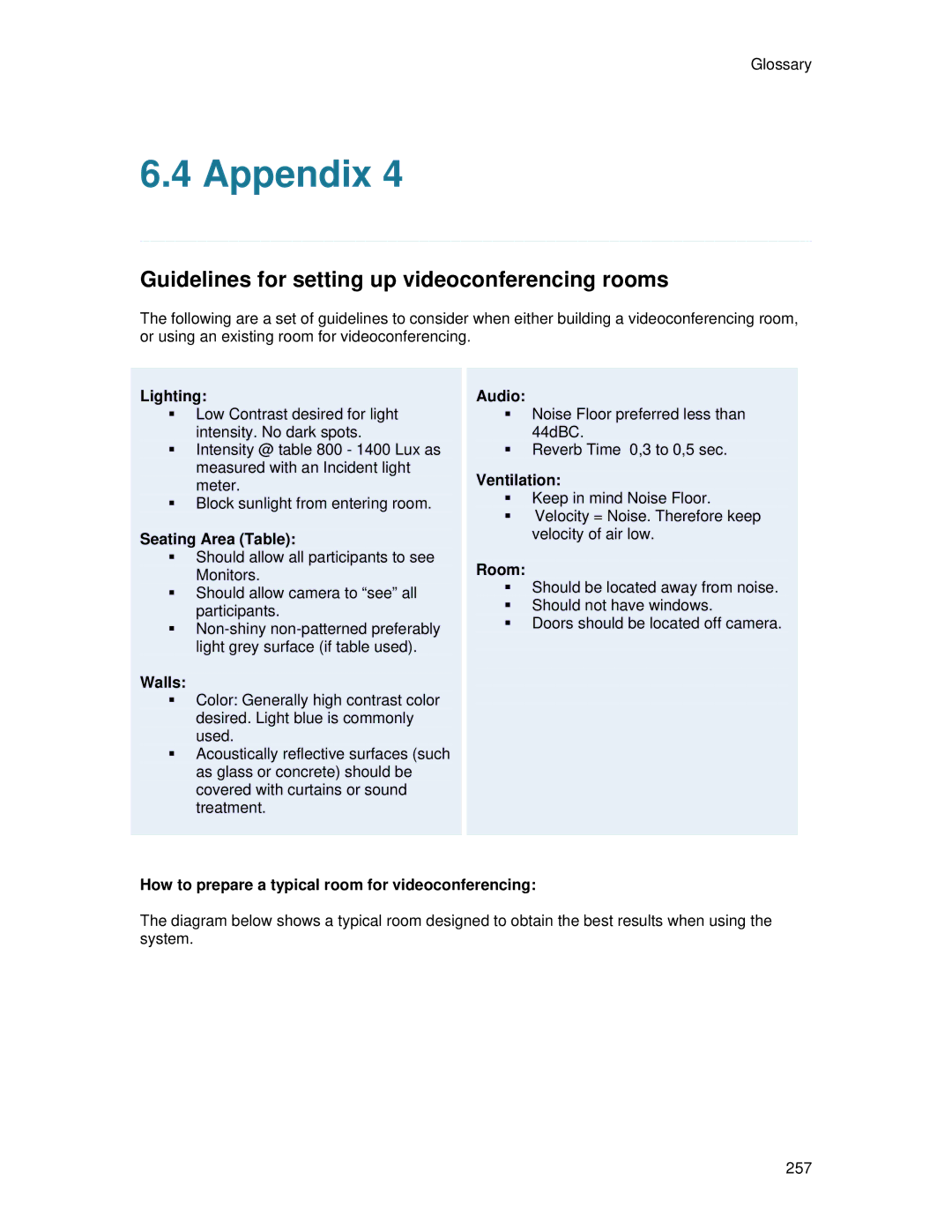
Glossary
6.4 Appendix 4
Guidelines for setting up videoconferencing rooms
The following are a set of guidelines to consider when either building a videoconferencing room, or using an existing room for videoconferencing.
Lighting:
Low Contrast desired for light intensity. No dark spots.
Intensity @ table 800 - 1400 Lux as measured with an Incident light meter.
Block sunlight from entering room.
Seating Area (Table):
Should allow all participants to see Monitors.
Should allow camera to “see” all participants.
Walls:
Color: Generally high contrast color desired. Light blue is commonly used.
Acoustically reflective surfaces (such as glass or concrete) should be covered with curtains or sound treatment.
Audio:
Noise Floor preferred less than 44dBC.
Reverb Time 0,3 to 0,5 sec.
Ventilation:
Keep in mind Noise Floor.
Velocity = Noise. Therefore keep velocity of air low.
Room:
Should be located away from noise.
Should not have windows.
Doors should be located off camera.
How to prepare a typical room for videoconferencing:
The diagram below shows a typical room designed to obtain the best results when using the system.
257
